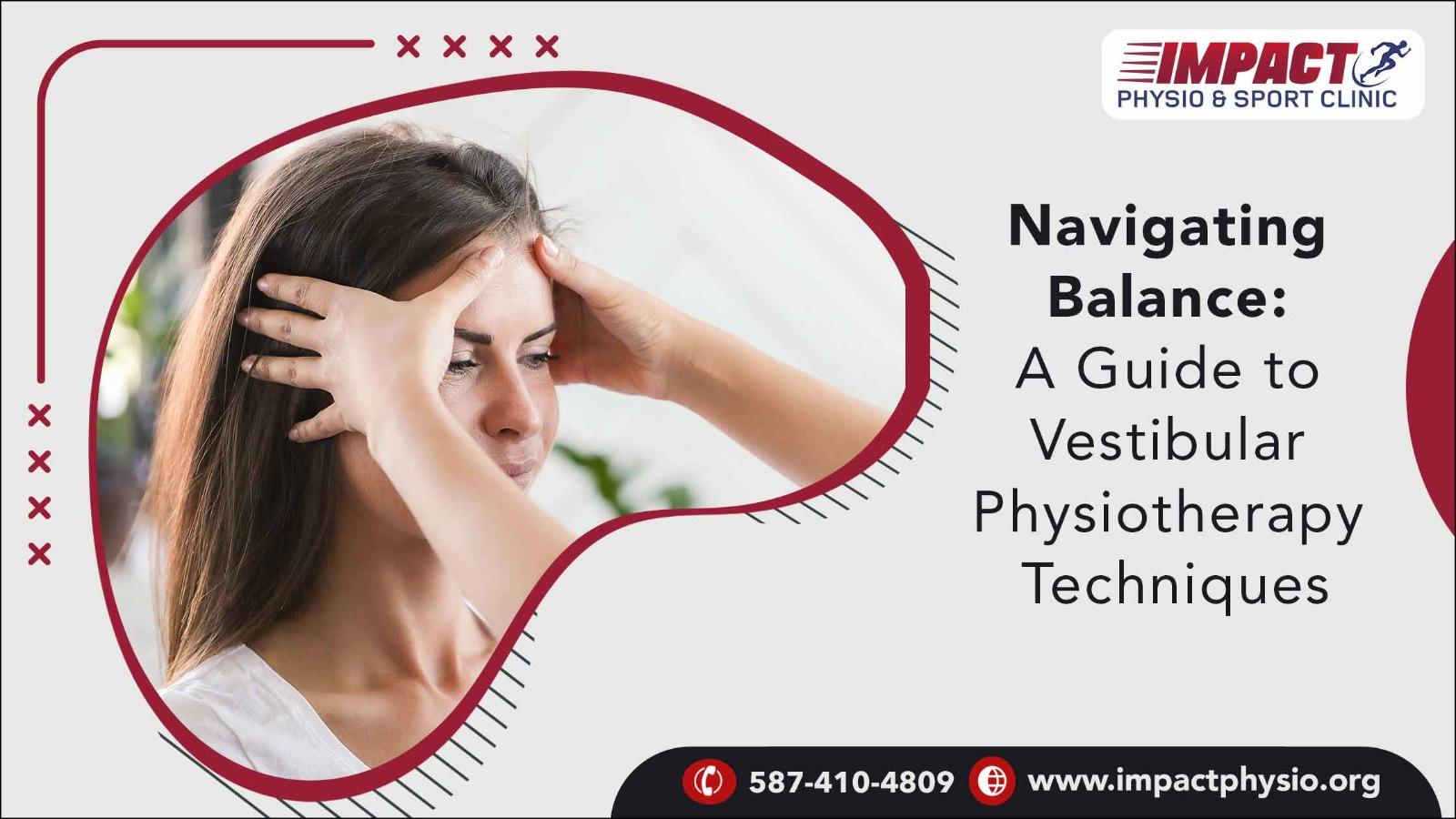Maintaining balance is a fundamental part of our everyday activities, often taken for granted until it is disrupted. Vestibular disorders, affecting balance and spatial orientation, can significantly impact one's quality of life. Vestibular Physiotherapy in Beaumont, especially at Impact Physiotherapy, offers specialized techniques to help individuals regain balance and navigate their world with confidence.
Understanding Vestibular Disorders: The Key to Balance and Stability
The vestibular system is essential for maintaining equilibrium and spatial awareness. It sends vital signals to the brain about the movements of the head and the body's orientation concerning gravity. This system is essential for coordinating balance and eye movements, enabling us to walk, run, and move smoothly without losing equilibrium.
When the vestibular system functions properly, it goes unnoticed; however, if it's disrupted, it can lead to significant issues like dizziness, vertigo, and imbalance. Therefore, the health and functionality of the vestibular system are vital for our daily activities and overall quality of life, making it a critical focus area in healthcare and rehabilitation.
The Various Techniques in Vestibular Physiotherapy
Canalith Repositioning Maneuvers
In vestibular physiotherapy, Canalith Repositioning Maneuvers are pivotal in treating Benign Paroxysmal Positional Vertigo (BPPV), a common vestibular disorder. These maneuvers, such as the Epley and Semont, are a series of specific head and body movements performed by a therapist to move the dislodged crystals in the inner ear back to their correct position.
They are known for providing immediate relief from the spinning sensations or vertigo typically associated with BPPV. Patients might experience instant improvement in symptoms, making these maneuvers a highly effective treatment option. Additionally, therapists often teach patients how to perform simplified versions, like Brandt-Daroff exercises, at home for continued management. This empowers patients to participate in actively managing their condition, ensuring long-term relief and effectiveness.
Gaze Stabilization Exercises
Gaze Stabilization Exercises form a crucial part of vestibular rehabilitation, particularly for patients who experience blurred vision or dizziness due to head movements. These exercises involve maintaining focus on a stationary object while moving the head, thereby training and strengthening the Vestibulo-Ocular Reflex (VOR).
The objective is to improve coordination between the eyes and head, a critical factor for tasks such as reading and driving. Patients practicing these exercises often see a significant reduction in symptoms like dizziness, enhancing their daily functionality. Regular practice leads to better stability, reducing the risk of falls or accidents related to vestibular issues.
These exercises are tailored to each patient’s needs and tolerance levels, ensuring a gradual and comfortable progression in therapy.
Balance Retraining Exercises
Balance Retraining Exercises are vital for patients dealing with balance issues, a common aftermath of vestibular disorders. These exercises range from simple tasks like standing on one leg to more complex ones that involve dynamic movements, all aimed at improving balance and proprioception.
Challenging the body's balance system in static (still) and dynamic (moving) conditions, these exercises help patients regain confidence in their physical abilities. As balance improves, the risk of falls decreases, which is particularly important for older patients or those with severe vestibular disorders.
Additionally, balance retraining exercises are often combined with other techniques like sensory integration and proprioceptive training for a more comprehensive approach to balance rehabilitation.
Habituation Exercises
Habituation Exercises are specifically designed for patients who experience heightened dizziness or vertigo with certain movements or positions. By gradually and repeatedly exposing patients to these triggers, the brain learns to adapt and becomes less sensitive to these movements over time.
This method is especially effective for those with motion sensitivity, allowing them to perform daily activities with less discomfort. Habituation exercises are typically customized to each patient’s unique triggers, ensuring a personalized approach to therapy. The gradual increase in exposure helps to build tolerance slowly, minimizing the risk of overwhelming the patient. As therapy progresses, patients often report a reduction in the intensity and frequency of dizziness episodes.
Relaxation and Breathing Techniques
Relaxation and Breathing Techniques are integral to vestibular therapy, particularly for addressing the anxiety and stress that often accompany vestibular disorders. These techniques, including diaphragmatic breathing and mindfulness meditation, help in managing the psychological aspects of vestibular symptoms. By learning to control their breathing and practicing relaxation, patients can significantly reduce stress-induced exacerbations of their symptoms.
These practices aid in physical recovery and enhance overall mental well-being. Incorporating these techniques into daily routines ensures that patients have tools at their disposal to manage episodes of dizziness or imbalance. Furthermore, the calming effect of these practices can be beneficial in improving sleep quality, which is often disrupted in individuals with vestibular disorders.
Functional Retraining for Everyday Activities
Functional Retraining is a critical aspect of vestibular physiotherapy, aimed at helping individuals return to their daily activities safely and confidently. This involves training and advising patients on how to perform everyday tasks, such as looking up or bending over, without provoking vestibular symptoms.
Therapists work closely with patients to modify activities and suggest ergonomic changes in the workplace or at home to prevent exacerbation of symptoms. By focusing on practical aspects of daily life, functional retraining ensures patients can maintain their independence and quality of life. This personalized approach to therapy is crucial, as it considers each patient's unique challenges and lifestyle, offering effective and sustainable solutions.
Embracing Stability Through Vestibular Rehabilitation
Vestibular physiotherapy stands as a pivotal element in addressing balance and orientation disorders. Its diverse techniques and personalized approaches offer hope and practical solutions for those grappling with the challenges posed by vestibular dysfunctions. Through dedicated care and cutting-edge rehabilitation methods, patients can regain their physical equilibrium, independence, and an improved sense of confidence in their daily lives. The journey to stability and improved well-being, guided by expertise in vestibular physiotherapy, demonstrates the remarkable resilience of the human body and its capacity to recover and adapt.
Also read about:
Effortless Investing Top Demat Account Apps to Consider
Which Mattress To Buy For Best Comfort
Buy Best Furniture at Hoc Furniture
















